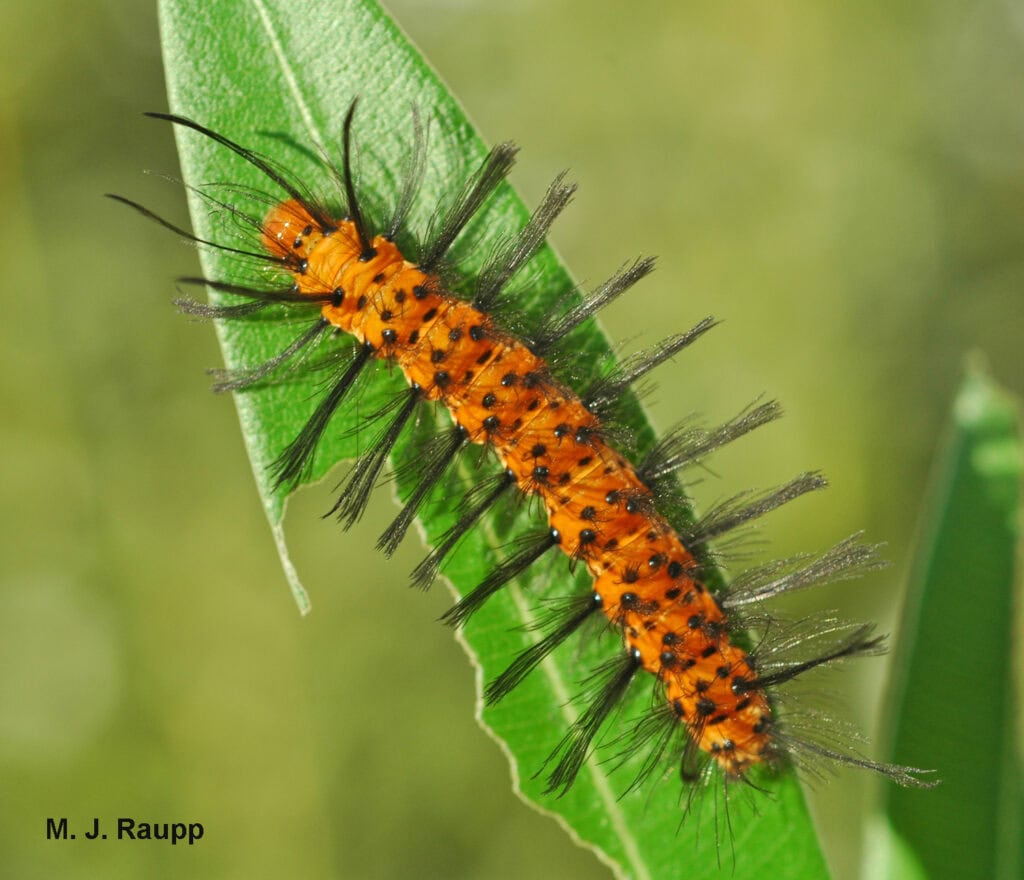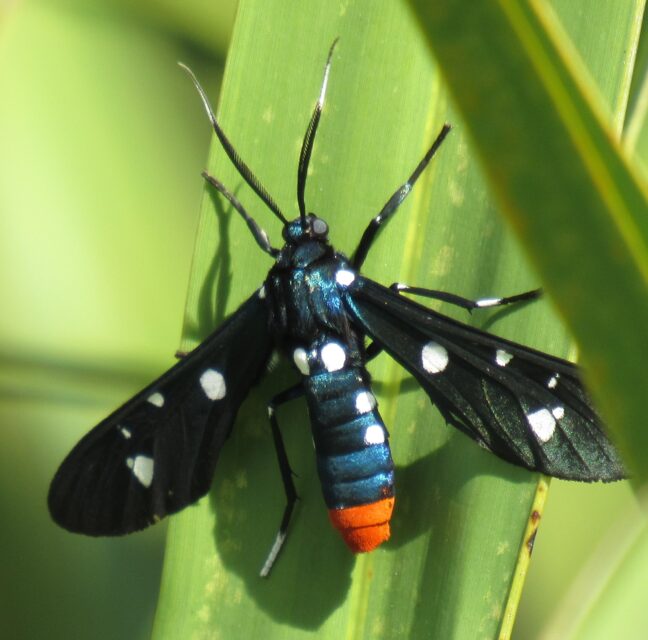Have you seen wasp-like insects on your oleanders? They are dark metallic blue, with a couple of white polka-dots dotting the wings and abdomen, with the tip of the abdomen bright red. They are called polka-dot wasp moths, and sometimes Uncle Sam moths because they are red, white and blue. They look like a very dangerous wasp, but in fact don’t sting. Beware, though they are interesting to look at, they mean nothing but trouble.
The larvae stage of the polka-dot wasp moth, commonly called the oleander caterpillar (syntomeida epilais), is orange or dark orange with long black hairs. This caterpillar is widely known for its voracious appetite. It is an eating machine! The caterpillar feeds in almost any location where its favorite food, the oleander plant, can be found. They also feed on desert rose plants and mandevilla. They are gregarious, and can cause damage from minor to severe.
Oleander caterpillar control should begin as soon as you see the caterpillars on the leaves. Wearing gloves, pick the caterpillars off by hand, and drop them in a bucket of soapy water. If the infestation is severe, clip heavily infested leaves and drop them into a plastic garbage bag. Dispose of the infested plant matter carefully to prevent spread of the insects. Also, if you are cutting them off oleander, be sure to wear gloves, as oleander sap is toxic.
Application of insecticides should be considered as a last resort for this insect that, while producing unsightly damage, does not kill oleander. Bacillus thuringiensis (BT) is a microbial insecticide that is sold under various trade names (Thuricide for one). It is a bacterium that kills only lepidopteran larvae. It has no toxicity toward beneficial insects.






